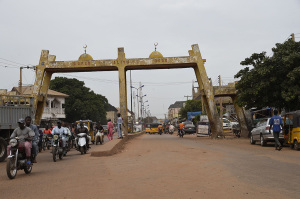Archaeology Discovery: 4500-Y-O Rare Burial Site in Peru of Woman Suggests Gender Equality

Archaeologists say a recent discovery of an ancient burial site in Peru provides insight into belief practices dating back 4,500 years.
The team of archaeologists, led by Ruth Shady, discovered the rare burial site in the coastal city of Aspero in the South American country, located about 14 miles from the larger Caral civilization dating back nearly 5,000 years.
Shady, who oversees the archaeological dig at the civilization, told the Andina media outlet that the recent discovery sheds light on burial practices, as well as the common beliefs shared by members of Aspero and the larger Caral Civilization.
Along with the woman, who was wrapped in cloth during her burial, researchers also discovered musical instruments, necklaces, and brooches, as well as other jewelry items.
"Investigators analyzed the skeletal remains and concluded the body belonged to a 40-year-old woman. The place and the way she was buried revealed the high rank she held 4,500 years ago," Shady told the media outlet. "The find shows evidence of gender equality, that is, both women and men were able to play leading roles and attain high social status more than 1,000 years ago."
Shady that the objects buried with the woman give insight into her high social status, as they were retrieved from different places surrounding the Aspero village, implying that she traveled locally or had close contacts with members of other villages. Several of the objects carried designs from the jungle, including various animals, the researcher added.
Recent discoveries at Peru's vast archaeological sites have shed light on the country's ancient civilizations, including their society's leadership roles, production abilities and trade.
Earlier this year, archaeologists from Peru's Culture Ministry discovered the tomb of a woman at the El Paraiso archaeological site dating back 3,500 years.
According to Peru Reports, the woman is believed to have died from blunt force trauma to the head, and she was buried with an array of sewing supplies and seafood products.
"In completing the restoration of Building 1, we have found food products of the period – seafood, fish, agricultural products as well as the remains of a woman about 30 years old, robust, brunette, who apparently was dedicated to textiles," Joaquin Narvaez, the leader of the dig, told Peru Reports in January of this year.
Ecavators also discovered a ceramic piece dating back 4,000 years that provides evidence into the civilization's clay production processes of the time.
As The Christian Post previously reported, even popcorn dating back to 6,700 years has been discovered at the Paredones and Huaca Prieta archaeological sites.
"Corn was first domesticated in Mexico nearly 9,000 years ago from a wild grass called teosinte," Dolores Piperno, who reported on the findings in the Proceedings of the National Academy of Sciences, said in 2012.
"Our results show that only a few thousand years later corn arrived in South America where its evolution into different varieties that are now common in the Andean region began," she added.



























